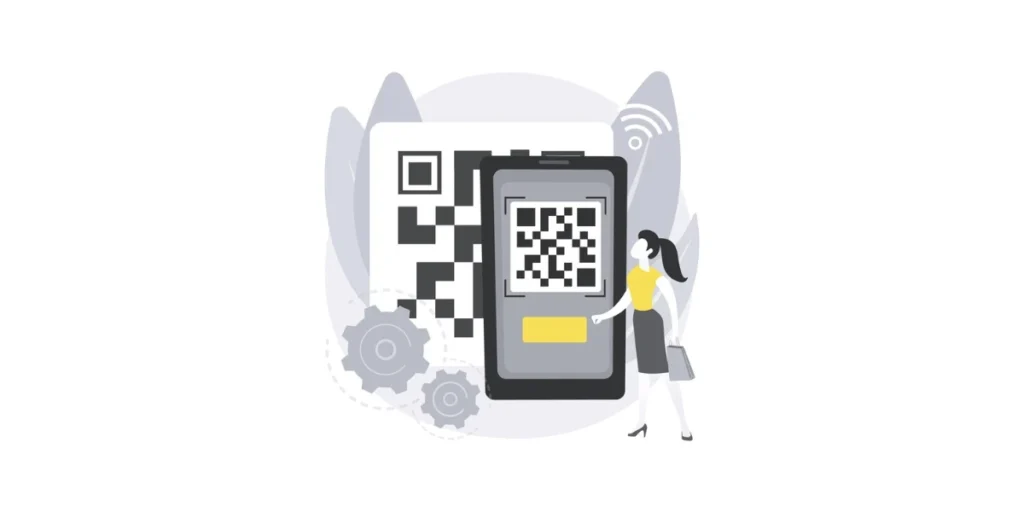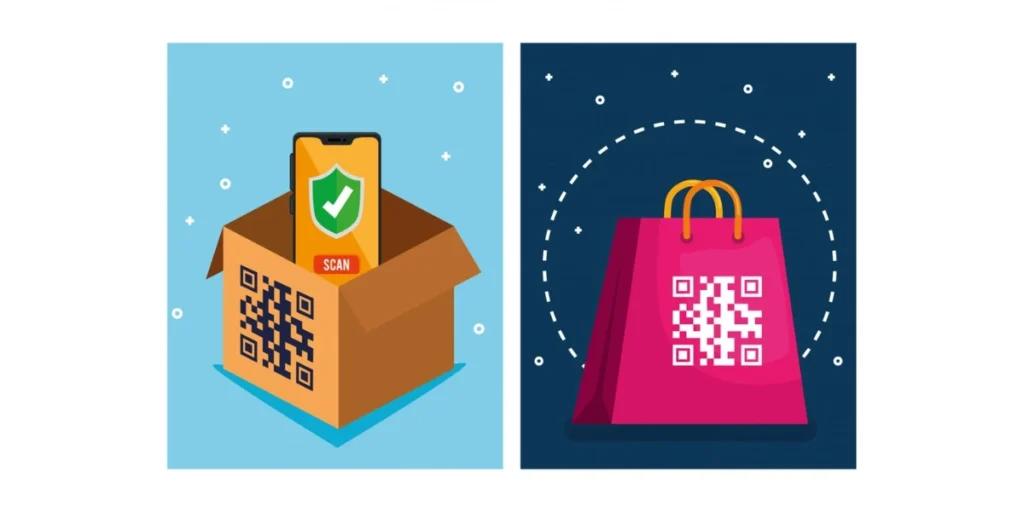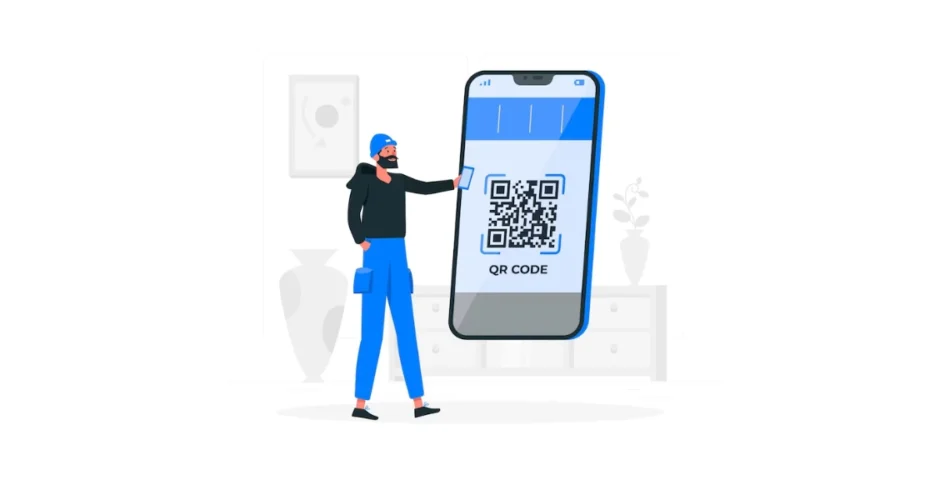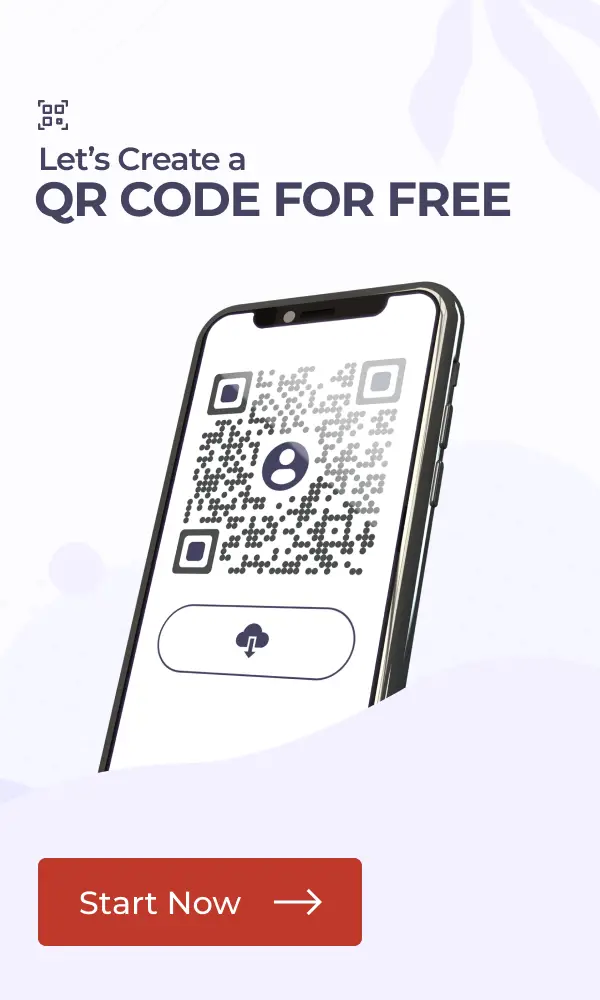QR Codes may be found everywhere. On the box of your favorite brand, your coffee cup, and even—seriously—on gravestones.
The problem is, have you ever given the question, “How long do these things last?” any thought?
Like that avocado you left in the refrigerator, do QR Codes expire? Or are they irreversible, like those awful pictures you can’t get over with your friends?
It depends—warning: spoilers ahead. How a QR Code is made, where it is used, and how well it is maintained affects how long it lasts.
You need to understand what drives people, whether you’re using them in your marketing or you’re just interested.
Stay tuned as we break down everything so you can learn about: how long does QR Code last.
A. What determines the lifespan of a QR Code

A QR Code’s lifespan depends on how it is made, stored, and maintained, not simply on the code itself. Let’s dissect the essential elements:
1. Static vs. Dynamic QR Codes
Static QR Codes are fixed. Once created, their data can’t be changed. As long as the code remains intact and scannable, it lasts indefinitely.
On the other hand, Dynamic QR Codes redirect to editable URLs or data. Their lifespan depends on whether the link or server behind them remains active.
2. Print quality and material
The material and print quality impact how long a printed QR Code lasts. Now, you must understand that the QR Code itself is not the concern here. It’s rather the durability and wear & tear of the material on which it’s printed/embossed.
Unlike a QR Code printed on a thin flyer, one printed on premium paper or sturdy materials like metal or plastic will endure longer.
Weatherproof materials are also necessary for outdoor use to endure weather conditions such as rain, snow, and sun.
3. Code size and complexity
The size and complexity of the QR Code also impact its lifespan.
Smaller or overly dense codes are more prone to distortion and damage, making them harder to scan as they age.
Opting for a slightly larger and less dense design can improve its longevity.
4. Error correction level
QR Codes come with error correction capabilities (low, medium, quartile, and high). A higher error correction level ensures the code remains scannable even if the part is damaged or degraded.
However, higher correction levels make the code more complex, so balancing error correction with simplicity is key.
5. Maintenance and cleaning
Regular maintenance is essential for QR Codes on physical surfaces such as product packaging, signs, or plaques.
Dust, dirt, or smudges can block scanners from accurately reading the code. Periodic cleaning or protective coverings can extend the code’s usability.
6. URL or server stability (for Dynamic QR Codes)
For dynamic QR Codes, the content is actually stored on the service provider’s server. This helps make the QR Code editable in the first place.
Now, the longevity heavily depends on the stability of the URL or the hosting server.
An inactive server (say if the QR Code generator shuts operations) could render the QR Code non-functional even if the physical code remains intact. While this
Hence, it becomes important to use a trusted service provider.
7. Technological advancements
QR Codes rely on widespread scanner compatibility. As scanning technology evolves, older formats might become obsolete.
Ensuring QR Codes are created with up-to-date standards helps future-proof their lifespan.
8. Quality control during generation
The quality of the QR Code generation process is crucial. Low-resolution images or improperly generated codes may deteriorate faster or become unscannable.
Using reputable QR Code generation tools ensures better durability.
B. Can QR Codes expire

Depending on the type of QR Code and its intended purpose, the concept of expiration varies. Let’s dissect it:
1. Static QR Codes: Never expire
Static QR Codes are permanent by nature. Once generated, the encoded data (like text, a URL, or contact information) is fixed and unchangeable.
It will never expire if the QR Code is still present and readable. However, problems like a broken printed code or an out-of-date URL can make it useless.
2. Dynamic QR Codes: Need a subscription to work
Dynamic QR Codes redirect to a URL or data stored on a server. While the code itself doesn’t expire, the functionality of the redirection depends on:
– URL status: The QR Code stops working if the linked URL becomes inactive.
– Subscription plans: Many QR Code generators offer dynamic codes with a limited validity period based on the user’s subscription. The code may expire if the subscription isn’t renewed or an error message is displayed.
– Server uptime: To keep the QR Code functional, the server hosting the linked content must remain active and well-maintained.
3. Conditional expiry
Some QR Codes are designed with specific expiration dates. For example:
– Time-sensitive campaigns: QR Codes used for event registrations, promotional offers, or limited-time content may be programmed to redirect users to an error page or a message stating that the campaign has ended.
– Security reasons: In industries like logistics or healthcare, QR Codes may have a built-in expiration for safety or compliance reasons.
4. Maintenance and monitoring
For both static and dynamic QR Codes, regular monitoring is essential. While static codes remain unchanged, any associated content (like a URL) should be updated. Ensure the link and server function properly for dynamic codes to avoid unintentional expiration.
In summary, while static QR Codes do not expire, dynamic ones are subject to factors like subscription status, link validity, and server uptime. Proper planning and maintenance can ensure that both types serve their purpose effectively.
What our customers think about us:
C. Static vs. Dynamic QR Codes: Which Lasts Longer?

The elements influencing the usability of static and dynamic QRs and their intended application determine how long they last. Let’s explore the differences:
1. Lifespan of Static QR Codes
Static QR Codes are permanent by design. Once created, the encoded data cannot be changed. Their longevity hinges on the durability of the medium where they are printed or displayed. For instance:
– A Static QR Code printed on weatherproof material or etched into metal can last for years without losing functionality.
– Damage to the code (scratches, fading, or tearing) is the primary reason for scannability issues.
Key Advantage: As long as the code is physically intact, it remains functional indefinitely.
2. Lifespan of Dynamic QR Codes
Dynamic QR Codes, while more versatile, have a lifespan tied to external factors, including:
– Subscription Plans: Many dynamic QR Codes are hosted on platforms that require active subscriptions. If the subscription expires, the code stops functioning.
– URL or Server Stability: The URL linked to the dynamic code must remain active, and the server hosting the content must be maintained.
– Content Expiry: In time-sensitive campaigns or temporary content, the code may intentionally redirect to an expiration message.
Key Advantage: Dynamic QR Codes can be updated with new content without reprinting or redistributing the code, making them ideal for evolving use cases.
3. Durability comparison
– Static QR Codes last longer in functionality as they don’t rely on external services or URLs. However, they are inflexible and cannot adapt to changes in the encoded data.
– Dynamic QR Codes offer more flexibility but require proper maintenance of the backend system. Without active management, they are prone to expiration.
4. Which should you choose?
- For Basic Use: Static QR Codes are well-suited for straightforward applications where the encoded data remains constant, such as on historical monuments, simple inventory management, or printed brochures. These codes are low-cost and require no ongoing maintenance.
- For Professional and Business Applications: Dynamic QR Codes are a better choice for businesses and professional use cases that require flexibility and enhanced functionality. These codes allow for traceability, enabling companies to track scan activity and gain insights into user behavior.
They also support customization and can be updated with new data without replacing the QR Code. This makes them ideal for marketing campaigns, digital menus, product packaging, and dynamic content delivery.
However, they require a reliable backend and a subscription plan to maintain the associated links and analytics.
40% of global QR Code scans are attributed to marketing campaigns. Source: profiletree
D. Physical durability of QR Codes: How long does QR Code last

What a QR Code is printed on, where it is placed, and how well it is maintained all affect how long it will last physically.
Let’s examine the main elements that affect a QR Code’s ability to endure in the wild.
1. The role of printing material
The material you print a QR Code on is a game-changer:
– Paper: Cheap and cheerful but short-lived. It is vulnerable to water damage, fading, and rips—excellent for one-time use but not ongoing use.
– Plastic or Vinyl: Protects against water, dirt, and wear. They’re the go-to choice for outdoor signs or reusable assets.
– Metal or Engraved Surfaces: Want a QR Code that outlasts generations? Etch it on a metal plate. Perfect for industrial equipment, plaques, or outdoor monuments.
2. Mother Nature’s impact
Outdoor QR Codes face an unforgiving environment:
– Sunlight: UV rays fade non-resistant inks over time. A faded QR Code isn’t doing anyone any favors.
– Rain and Moisture: Rain will blur or wash away the code without waterproof materials.
– Temperature Extremes: Heat can warp plastics; cold can make them brittle. Both can wreak havoc on your QR Code’s scannability.
3. Boosting durability with protective measures
Don’t leave your QR Code to fend for itself. These strategies can extend its life:
– Lamination or Protective Films: Shield printed codes from spills, scratches, and handling damage.
– UV-Resistant Coatings: A must for anything outdoors. Keep your QR Code readable under the harshest sun.
– Engraving or Industrial-Grade Printing: Ideal for long-term use in rugged conditions.
4. Handling and upkeep
Frequent use or mishandling can shorten a QR Code’s lifespan:
– Wear and tear can crease or smudge the code on high-touch items like menus or brochures.
– Regular cleaning keeps dirt and grime from obstructing scannability, especially for QR Codes on outdoor signs or equipment.
5. Real-life durability in action
– Retail packaging: Printed QR Codes usually last as long as the packaging remains intact. Perfect for products stored under normal conditions.
– Industrial applications: QR Codes engraved on machinery or tools survive harsh factory environments for years.
– Outdoor signage: Weatherproof QR Codes on billboards or plaques can stay functional for decades with proper protection.
E. Digital QR Codes: Do links ever stop working?

Digital QR Codes, especially those with dynamic capabilities, rely on a functional backend system to keep their links active. Here’s why links can sometimes stop working and how to prevent it:
1. Static QR Codes: The links depend on longevity
Static QR Codes store fixed data within the code, like a direct URL. The QR Code will always work as long as:
– The link remains active and valid.
– The destination (website or file) hasn’t been deleted or moved.
However, the QR Code will point to a dead or non-functional page if the URL becomes outdated.
2. Dynamic QR Codes: Backend maintenance is key
Dynamic QR Codes redirect users to a URL hosted on a server. While these codes are more flexible, they depend on several factors:
– Subscription Plans: The link may stop working if the QR Code is created using a paid service and the subscription lapses.
– Broken Links: If the target URL is deleted, moved, or altered without updating the QR Code, it will fail to load the intended content.
– Server Uptime: The hosting server must be active and well-maintained. Server outages or technical issues can temporarily disrupt access.
3. Common causes of broken QR Code links
Several factors can cause links in digital QR Codes to stop working:
– Expired Domains: Websites linked to the QR Code may not renew their domain names, leading to a dead link.
– URL Restructuring: Websites often change URL structures, breaking old links.
– Service Deactivation: For dynamic QR Codes, discontinuing the QR generation service or hosting platform can render the links inactive.
4. How to keep digital QR Code links active
To ensure your digital QR Codes remain functional:
– Use Reliable Services: Opt for trusted QR Code platforms with long-term support and robust server infrastructure.
– Monitor Links: Regularly check the status of URLs associated with your QR Codes. Broken link monitoring tools can help.
– Opt for Permanent Redirects: When updating a linked URL, use permanent (301) redirects to maintain functionality.
– Renew Subscriptions: For dynamic QR Codes, ensure timely renewal of hosting or service subscriptions.
5. Real-life examples
– Marketing Campaigns: Dynamic QR Codes for limited-time promotions often expire when campaigns end, but proper redirects can guide users to updated offers.
– Event Registrations: If linked to event pages, the QR Code becomes useless once the event is over or the page is down.
– E-Commerce Products: QR Codes on packaging linked to product pages can fail if the page is moved or discontinued without updating the code.
F. Real-life examples of QR Code longevity

1. QR Codes on monuments and historical sites
– Example: Bath, UK, has installed QR Codes on plaques around historic landmarks. These codes link visitors to detailed historical information.
– Longevity Factor: The QR Codes are etched onto durable materials like metal and protected from environmental damage, ensuring their functionality for years despite outdoor exposure.
2. Retail packaging
– Example: Coca-Cola once used QR Codes on beverage cans to connect consumers to personalized digital content.
– Longevity Factor: Although the codes were short-lived due to campaign timing, the technology proved resilient on the product surface until consumption. Proper printing techniques and protective layers ensured they stayed scannable.
3. Outdoor advertising
– Example: Skoda ran a QR Code-based newspaper campaign where readers could scan to learn more about new car models.
– Longevity Factor: Despite being a short-term campaign, the QR Codes remained functional as long as the newspaper was preserved. This highlights the importance of robust printing for printed QR applications.
4. Memorial plaques and art installations
– Example: Artists and city planners have embedded QR Codes on memorial plaques and sculptures to share the stories behind these creations.
– Longevity Factor: By using weatherproof coatings or engraving techniques, these QR Codes endure years of outdoor exposure without fading or damage.
5. Product labels in handloom and handicrafts
– Example: Artisans in the handloom sector use QR Codes on product tags to authenticate their work and share their backstories.
– Longevity Factor: QR Codes printed on durable fabric tags or weather-resistant labels stay intact even after shipping and handling.
6. Logistics and supply chain
– Example: Amazon uses QR Codes on delivery packages for tracking and customer support.
– Longevity Factor: These QR Codes, printed on high-quality adhesive labels, remain functional throughout the shipping process, even when exposed to rough handling and varying weather conditions.
7. Libraries and archives
– Example: Libraries use QR Codes on bookshelves to link readers to catalog entries or eBooks.
– Longevity Factor: Laminated codes in controlled indoor environments remain scannable for years, requiring minimal upkeep.
8. QR Codes in public transportation
– Example: Delhi Metro introduced QR Codes for ticketing, allowing passengers to travel seamlessly.
– Longevity Factor: The codes, displayed on digital screens or printed on robust ticketing materials, function reliably as long as the backend system is maintained.
9. Museum exhibits
– Example: Museums worldwide place QR Codes near exhibits to give visitors access to audio guides or multimedia content.
– Longevity Factor: Properly mounted and protected, these QR Codes withstand frequent use while remaining visually appealing and functional.
G. Common mistakes that shorten QR Code lifespan

1. Using low-quality printing materials
– Problem: Printing on thin paper or low-quality ink can fade, tear, or smudge.
– Impact: QR Codes become unreadable within weeks, especially in high-contact or outdoor environments.
– Solution: Invest in durable materials like vinyl, plastic, or metal, and use fade-resistant ink for outdoor use.
2. Neglecting environmental factors
– Problem: QR Codes exposed to direct sunlight, rain, or extreme temperatures degrade faster.
– Impact: UV rays can fade ink, while moisture and temperature changes can warp or destroy materials.
– Solution: Use UV-resistant coatings, weatherproof laminations, or engrave QR Codes on weather-resistant surfaces for outdoor applications.
3. Choosing the wrong QR Code type
– Problem: Using a static QR Code for data that may change leads to outdated information.
– Impact: Users scanning the code are directed to non-functional or irrelevant content.
– Solution: Use dynamic QR Codes for flexible, editable content, and ensure the links are well-maintained.
4. Poor placement
– Problem: QR Codes placed in hard-to-reach, low-light, or high-traffic areas are prone to damage or neglect.
– Impact: The code becomes inaccessible or damaged from handling, dirt, or vandalism.
– Solution: Place QR Codes in protected, well-lit, and easily accessible locations, away from areas prone to wear and tear.
5. Overloading the QR Code with data
– Problem: Embedding too much information creates dense, complex QR Codes.
– Impact: Scanning becomes slower or fails, especially if the code degrades over time.
– Solution: Use shortened URLs or dynamic QR Codes to reduce data size and improve scannability.
6. Lack of error correction
– Problem: Skipping higher error correction levels to save space or design effort.
– Impact: QR Codes become unusable if partially damaged or obscured.
– Solution: Opt for higher error correction levels (e.g., Level H) to ensure functionality even if the code is partially compromised.
7. Ignoring testing before deployment
– Problem: Failing to test QR Codes on multiple devices and scanning apps.
– Impact: Poor scannability in real-world conditions leads to frustrated users and lost engagement opportunities.
– Solution: Always test QR Codes in various lighting, angles, and distances to ensure they work seamlessly.
8. Not monitoring or updating links
– Problem: URLs linked to QR Codes become broken due to expired domains, outdated pages, or service disruptions.
– Impact: Users are met with dead links, ruining their experience.
– Solution: Regularly monitor linked content and implement redirects for any changes to the URL.
9. Overlooking maintenance
– Problem: Allowing QR Codes to accumulate dirt, scratches, or damage without regular upkeep.
– Impact: Scanning fails over time, especially in high-touch or outdoor areas.
– Solution: Clean QR Codes periodically and replace damaged codes as needed.
10. Relying on poor-quality QR Code generators
– Problem: Using unreliable or free generators that produce low-resolution or poorly optimized codes.
– Impact: QR Codes degrade or fail to scan correctly, leading to usability issues.
– Solution: Use trusted, professional QR Code generators to ensure high-quality output with proper resolution and error correction.


H. How to test if your QR Code is still functional

1. Scan it with multiple devices
– Why: Not all devices and QR Code scanning apps handle codes similarly.
– How: Test the QR Code using smartphones, tablets, and dedicated scanners. Use both iOS and Android devices to ensure compatibility.
2. Check scannability under real-world conditions
– Why: QR Codes often face challenges in different environments.
– How:
- Test the code in varying lighting conditions, including low light and direct sunlight.
- Try scanning from different angles and distances to confirm usability.
- Simulate user behavior by placing the QR Code in its intended environment (e.g., on packaging, posters, or digital screens).
3. Validate the destination link
– Why: A functional scan is meaningless if the link is broken.
– How:
- Ensure the URL or content linked to the QR Code remains live and accurate.
- Check for redirect issues or slow-loading pages.
- Confirm the destination is mobile-friendly, as most scans come from smartphones.
4. Assess physical condition (For Printed QR Codes)
– Why: Damage, fading, or wear can impact scannability.
– How:
- Inspect for scratches, tears, or discoloration.
- If the code is outdoors, check for weather-related damage like UV fading or water stains.
- Replace or reprint the QR Code if any deterioration is found.
5. Test error correction resilience
- Why: High error correction levels can make a QR Code scannable even if partially damaged.
- How:
- Cover parts of the QR Code with tape or small marks and attempt to scan.
- If it fails, consider re-generating the QR Code with a higher error correction level.
6. Analyze scan metrics (For Dynamic QR Codes)
– Why: Dynamic QR Codes allow you to monitor performance and identify potential issues.
– How:
- Use analytics dashboards provided by QR Code platforms to check scan activity.
- Look for unusual drops in scans, which could indicate broken links or technical issues.
7. Confirm compatibility with scanning apps
– Why: Some apps might struggle with specific QR Code types or designs.
– How:
- Use popular scanning apps like Google Lens, Apple Camera, and dedicated QR Code readers to ensure broad compatibility.
- If using a customized QR Code design, verify that it doesn’t compromise scannability.
8. Test regularly and after changes
– Why: Links or environments may change over time, affecting QR Code functionality.
– How:
- Set a schedule to test your QR Code periodically (e.g., monthly for active campaigns).
- Re-test after updating the linked content or relocating the QR Code.
9. Get feedback from users
– Why: Users may encounter issues you didn’t foresee.
– How:
- Encourage users to report scanning issues.
- Use surveys or feedback tools to gather insights about their scanning experience.
10. Keep a backup ready
– Why: A backup ensures continuity if the QR Code fails unexpectedly.
– How:
- Store a digital version of the QR Code in high resolution.
- Be prepared to reprint or replace it quickly if needed.
I. The future of QR Codes: How long does a QR Code last

QR Codes are evolving. New ideas are being introduced to make them last longer and work better. Here’s what the future holds for QR Codes:
1. Better error correction
QR Codes are being made with stronger error correction. This means they can survive more damage and still work.
– Impact on Longevity: Even if a QR Code gets scratched or dirty, it will still work. This makes QR Codes last longer, especially in tough environments.
2. Augmented reality (AR) QR Codes
Some QR Codes are adding AR. When you scan them, you see interactive content instead of just a link.
– Impact on Longevity: AR QR Codes will stay interesting if they offer fresh, engaging experiences.
3. Self-healing QR Codes
New materials can fix the damage on QR Codes. If they get scratched or worn, they can repair themselves.
– Impact on Longevity: This keeps QR Codes working for a long time, even in tough conditions.
4. QR Codes with RFID and NFC
RFID and NFC are being added to QR Codes. These features allow for contactless interactions.
– Impact on Longevity: These QR Codes can still work even if the physical code wears down, making them last longer.
5. Digital twin QR Codes
QR Codes can link to digital twins—virtual versions of physical objects. This allows for real-time data tracking.
– Impact on Longevity: These QR Codes stay useful because they can be updated remotely. They remain relevant without needing to be replaced.
6. Smarter Dynamic QR Codes
Dynamic QR Codes will keep getting better. They can update based on real-time data and user behavior.
– Impact on Longevity: These QR Codes stay fresh and valuable for longer without replacing the physical code.
Brands that trust us:
Summing Up
So, how long does a QR Code last? It depends, but one thing is clear: QR Codes are here to stay. Whether you’re using a simple static code or a more advanced dynamic one, choosing the right materials and staying updated with new tech will help your codes last longer.
Just remember—QR Codes need a little care. Look after them, and they’ll keep working for you for years.
Now, go ahead—create, scan, and enjoy. Let those QR Codes do the work for you!


